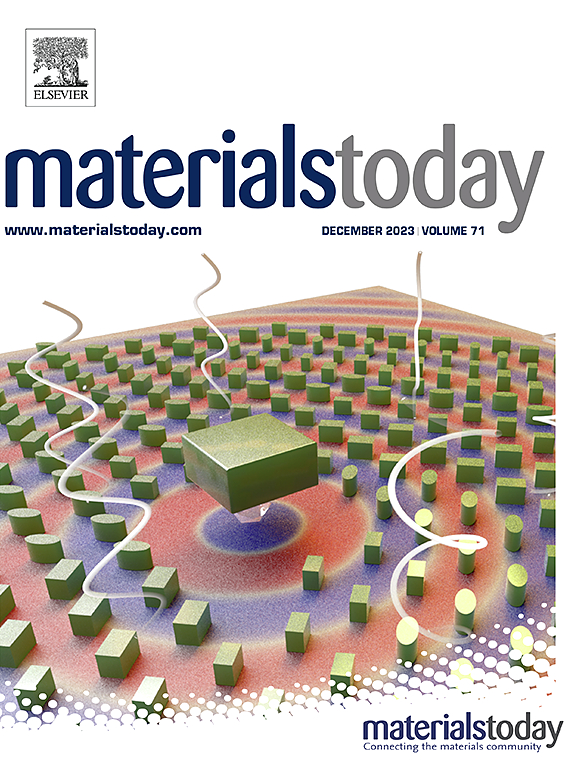Mo-terminated edges in two-dimensional molybdenum disulfide for site-specific hydrolysis and DNA cleavage
IF 21.1
1区 材料科学
Q1 MATERIALS SCIENCE, MULTIDISCIPLINARY
引用次数: 0
Abstract
The hydrolysis of DNA serves as the foundational principle for gene engineering that enable precise gene cleavage at the molecular level. This process typically occurs in biological nucleases, which exhibit nucleobase-selective and catalytic hydrolysis capabilities rarely replicated in abiotic nanomaterials. Here, we demonstrate that molybdenum-terminated (Mo-terminated) edges of molybdenum disulfide (MoS2) possess the unique ability to abstract a proton (H+) from water molecules, thereby facilitating catalytic hydrolysis reactions that cleave the phosphodiester bonds in DNA through the action of hydroxide ions. The enhanced proton absorption at Mo-terminated edges of MoS2 significantly reduces the activation energy required for the DNA hydrolysis reaction. Furthermore, the favorable interaction between the Mo-terminated edges and thymine nucleobases promotes both charge transfer and P-O bond cleavage, enabling targeted DNA hydrolysis at 'TTTTTTT' sequences under dark conditions. This discovery underscores the potential of MoS2 as a stable, efficient nanosystem for precise genetic editing, heralding advanced applications in the field of gene engineering.
二维二硫化钼的钼端端边缘用于位点特异性水解和DNA切割
DNA的水解是基因工程的基本原理,可以在分子水平上进行精确的基因切割。该过程通常发生在生物核酸酶中,其表现出核碱基选择性和催化水解能力,很少在非生物纳米材料中复制。在这里,我们证明了钼二硫化钼(MoS2)的钼端(mo端)边缘具有从水分子中提取质子(H+)的独特能力,从而促进催化水解反应,通过氢氧化物离子的作用裂解DNA中的磷酸二酯键。二硫化钼端部质子吸收的增强显著降低了DNA水解反应所需的活化能。此外,mo端边缘和胸腺嘧啶核碱基之间的良好相互作用促进了电荷转移和P-O键的切割,从而在黑暗条件下实现了“TTTTTTT”序列的靶向DNA水解。这一发现强调了二硫化钼作为一种稳定、高效的精确基因编辑纳米系统的潜力,预示着它在基因工程领域的先进应用。
本文章由计算机程序翻译,如有差异,请以英文原文为准。
求助全文
约1分钟内获得全文
求助全文
来源期刊

Materials Today
工程技术-材料科学:综合
CiteScore
36.30
自引率
1.20%
发文量
237
审稿时长
23 days
期刊介绍:
Materials Today is the leading journal in the Materials Today family, focusing on the latest and most impactful work in the materials science community. With a reputation for excellence in news and reviews, the journal has now expanded its coverage to include original research and aims to be at the forefront of the field.
We welcome comprehensive articles, short communications, and review articles from established leaders in the rapidly evolving fields of materials science and related disciplines. We strive to provide authors with rigorous peer review, fast publication, and maximum exposure for their work. While we only accept the most significant manuscripts, our speedy evaluation process ensures that there are no unnecessary publication delays.
 求助内容:
求助内容: 应助结果提醒方式:
应助结果提醒方式:


